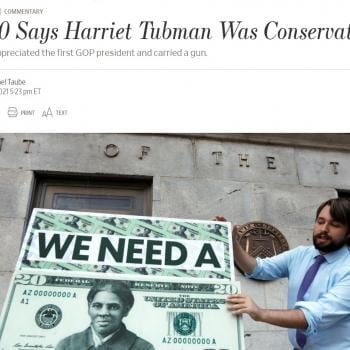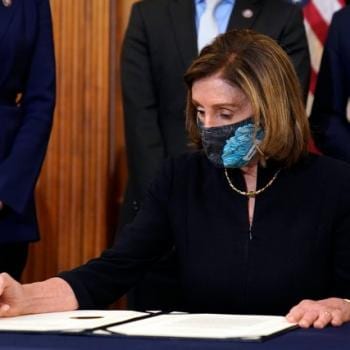Some years ago I read the book Nixonland. I thoroughly enjoyed it, and the glimpse it provided of the turbulent 1960s. But the book gave me a gift I didn’t realize at the time. We all see history happening all around us every day, but we usually don’t notice it. Nixonland made me keenly aware of it. Someday a popular history book covering our current period will mention Michael Brown, Dylann Roof, and even Rachel Dolezal. It will mention Hobby Lobby and the birth control mandate, Obamacare and Benghazi and conservative opposition to Hilary Clinton, and, yes, yesterday’s Supreme Court decision, Obergefell v. Hodges.
I think a lot of parents struggle with knowing how much they should let their children know of the news and current events, and I get that. For myself, I want my children to remember the history we are currently living through. My son, Bobby, is still too young to understand news or current events, but the same is not true for my six-year-old daughter, Sally. I want Sally to be able to tell her grandchildren that she remembers when marriage equality became the law of the land in every state. As hard as it may be, I want her to remember Michael Brown, Eric Garner, Tamir Rice, and Freddie Grey. I want her to remember when public opinion turned against the Confederate flag.
Of course, there are limits to what I am comfortable telling Sally. I’m not sure what I’d say to her if another Sandy Hook shooting happened today, for example, and I often translate weighty things into language a six-year-old can understand, trying to take the edge off in the process. I suppose it’s not so much about helping Sally keep up with the news as it is exposing her to major currents that I know will have historical significance. The conversation surrounding Black Lives Matter, or the push for marriage equality, these things aren’t going to be forgotten. A random plane crash? Not so much.
I also think we often underestimate children’s ability to process and look for solutions. For example, Sally understands the principles behind global climate change, and she understands how dire the consequences promise to be. Yet her response is not to feel depressed or defeated but rather to look for solutions. She once spent an entire car trip brainstorming alternative energy sources, and this wasn’t something she thought about for a while and then forgot about, either—Sally actively encourages Sean and I to recycle and is sincerely concerned about protecting the environment, not out of fear but out of optimism.
Other topics are weightier. Sally was in the car with me late last year as I listened to an NPR report about Tamir Rice, tears running down my cheeks. As I struggled to hold back sobs, I sought to explain the situation to Sally. How do you explain structural racism and individual biases to a five-year-old? I don’t have an answer to that question, but I did try. And on some level, Sally understood. Sally goes to school with black children and has black friends (as cliche as that sounds), and was able to grasp that the world will be a harder place for them than it is for her. That conversation finished with her resolve to make a difference, a resolve born out of her strong sense of fairness and justice.
We talked about McKinney, too, though I didn’t show her the video. Sally was incensed by what I told her about the incident, and by what she heard about it on NPR. But once again, her response was to look for solutions. “We should make a law that police officers can’t hurt black kids,” she said. Naive? Yes. But still, I love her optimism. Someone has to believe things can change.
And now we come to marriage equality. Sally knows that some children have two mommies or two daddies, and that families take diverse forms. “I guess Caden just lives with his dad,” she told me one day after overhearing a neighbor boy talking about going out of town to visit his mother. Another neighbor boy lives with his mother and sees his father on weekends. While every child sees their family structure as normative on some level, Sally understands that there is diversity out there, and she knows that that diversity applies to families headed by gay, lesbian, or bisexual couples as well. And here, too, her sense of justice and fairness kick in in full swing.
The things Sally learns don’t just go in one ear and out the other. They tend to sink in. I mentioned this anecdote earlier this week, but I’ll repeat it again here. Some months ago Sally told me out of the blue that I should be a “judging person” when I grow up. Confused, I asked her what she meant, and she explained as follows:
“If you grow up to be a judging person, you can make the other states change their laws so that boys can marry boys and girls can marry girls. Because if I grow up and find a girl I really like, I want to be able marry her without having to move to another state or something.”
And now it turns out I didn’t have to grow up to be “judging person” after all.
Of course, keeping Sally in the know with regards to the history she is living through involves explaining the objections of those critical of Black Lives Matter or the movement for marriage equality. I was only ever given a distorted view of the opposition’s arguments and positions as a child, so I try not to do that with Sally. I try to earnestly and truly explain arguments on both sides of a given issue, while also explaining what I believe and why. I also try not to solicit an opinion from her unless she offers one herself. I don’t want her to get the idea that when I talk about these issues with her I’m after a specific answer. I don’t want to ask her to perform.
I suppose, in the end, that it’s not just about making sure Sally is aware of the history taking place around her, it’s also about providing her a foundation and context for the world she will grow up to inherit. I want to launch her into adulthood, someday, with a grasp on the major debates and currents swirling around her.














